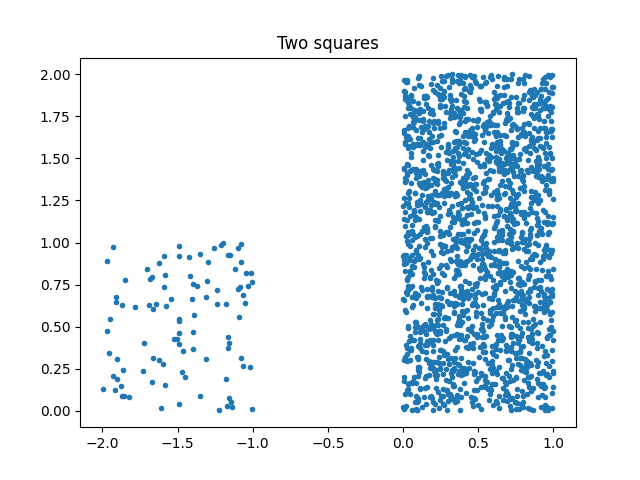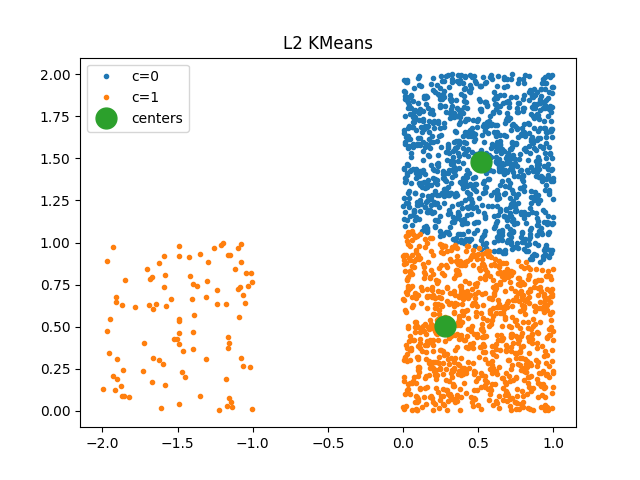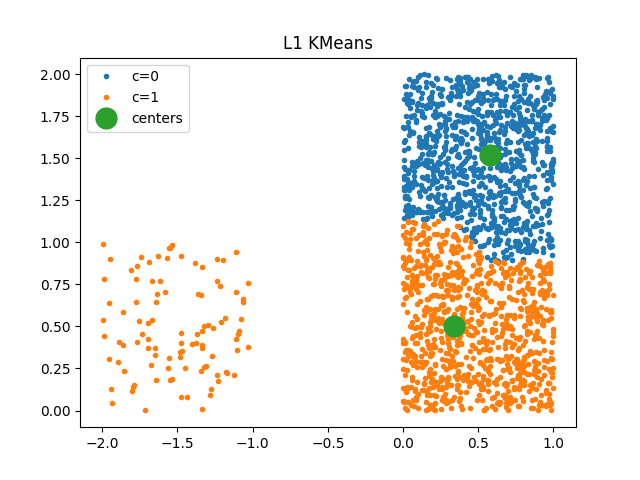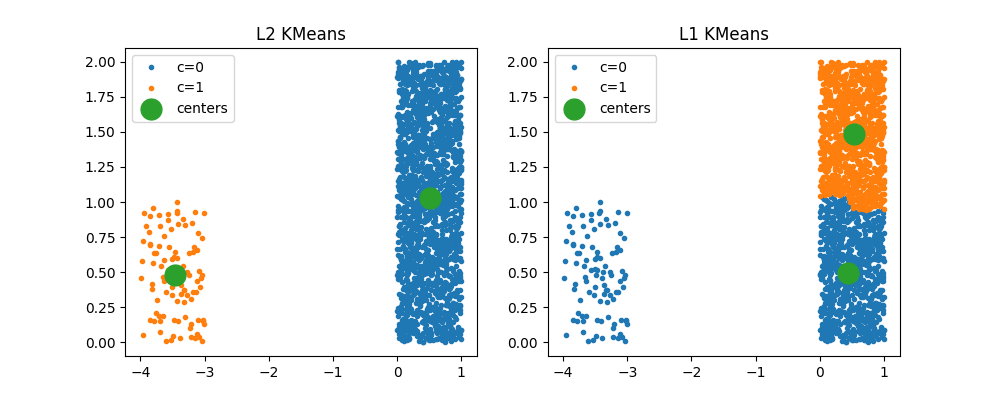Note
Go to the end to download the full example code.
KMeans with norm L1¶
This demonstrates how results change when using norm L1 for a k-means algorithm.
import matplotlib.pyplot as plt
import numpy
import numpy.random as rnd
from sklearn.cluster import KMeans
from mlinsights.mlmodel import KMeansL1L2
Simple datasets¶
(2000, 2)
fig, ax = plt.subplots(1, 1)
ax.plot(X[:, 0], X[:, 1], ".")
ax.set_title("Two squares")

Text(0.5, 1.0, 'Two squares')
Classic KMeans¶
It uses euclidean distance.
km = KMeans(2)
km.fit(X)
km.cluster_centers_
def plot_clusters(km_, X, ax):
lab = km_.predict(X)
for i in range(km_.cluster_centers_.shape[0]):
sub = X[lab == i]
ax.plot(sub[:, 0], sub[:, 1], ".", label="c=%d" % i)
C = km_.cluster_centers_
ax.plot(C[:, 0], C[:, 1], "o", ms=15, label="centers")
ax.legend()
fig, ax = plt.subplots(1, 1)
plot_clusters(km, X, ax)
ax.set_title("L2 KMeans")

Text(0.5, 1.0, 'L2 KMeans')
KMeans with L1 norm¶
kml1 = KMeansL1L2(2, norm="L1")
kml1.fit(X)
array([[0.4486934 , 0.60484421],
[0.57430815, 1.53979326]])
fig, ax = plt.subplots(1, 1)
plot_clusters(kml1, X, ax)
ax.set_title("L1 KMeans")

Text(0.5, 1.0, 'L1 KMeans')
When clusters are completely different¶
(2000, 2)
kml1 = KMeansL1L2(2, norm="L1")
kml1.fit(X)

Text(0.5, 1.0, 'L1 KMeans')
Total running time of the script: (0 minutes 0.990 seconds)